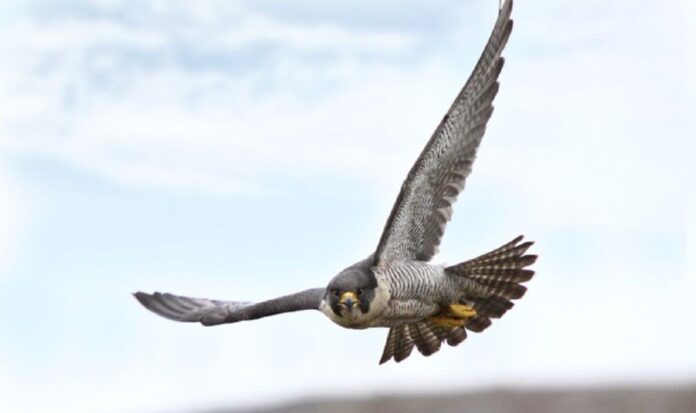Modern birds’ feathers inherited proteins from their dinosaur ancestors 125 million years ago And this means that some species of feathered dinosaur would have been able to use their feathers to glide. Previous research suggested that dinosaur feathers contained proteins that made them more supple than modern birds. Most dinosaur feathers were made up of alpha-keratin proteins, making them flexible, while bird feathers are rich in beta-keratin proteins which strengthen them for flight. However, University College Cork (UCC) scientists think that theory could be wrongly based on degradation caused by fossilisation. This would mean that the proteins have remained unchanged for 125 million years and dinosaur feather were stiff, enabling them to glide. Scientists also worked on the study from Stanford Synchrotron Radiation Light Source (SSRL), at the Department of Energy’s SLAC National Accelerator Laboratory. UCC palaeontologist Dr Tiffany Slater said: ‘It’s really exciting to discover new similarities between dinosaurs and birds. READ MORE: Rare birds blown off course by Storm Agnes end up in UK ‘Using X-rays and infrared light, we found that feathers from the dinosaur Sinornithosaurus contained lots of beta-proteins, just like feathers of birds today. ‘This finding validates our hypothesis that dinosaur birds had stiff feathers – like in modern birds. ‘Our experiments help explain that this weird chemical discrepancy is the result of protein degradation during the fossilisation process. “So although some dinosaur feathers do preserve traces of the original beta-proteins, other fossil feathers contain alpha-proteins that formed during fossilisation.’ The team tested 125-million-year-old wings of the dinosaur Sinornithosaurus, which may have glided as opposed to flown, and early bird Confuciusornis. They also studied a 50-million-year-old feathers from the US. The fossils tested for key components of the beta-keratin proteins under Stanford Synchrotron Radiation Light Source (SSRL)’s powerful X-rays, to determine whether they were in their native form or had altered over time, and if so how. Separate experiments simulated the temperatures the fossils had been subjected to over the past 125 million years. The experiments showed the fossilisation process can create alpha-proteins, and they don’t have to have been part of the feather during life. Though some fossil feathers contain alpha-proteins, the researchers they were produced by the extreme heat fossils experienced millions of years. Trending SUBSCRIBE Invalid email We use your sign-up to provide content in ways you’ve consented to and to improve our understanding of you. This may include adverts from us and 3rd parties based on our understanding. You can unsubscribe at any time. More info
Birds feathers were inherited from dinosaurs 125m years ago, research finds
Sourceexpress.co.uk
RELATED ARTICLES


